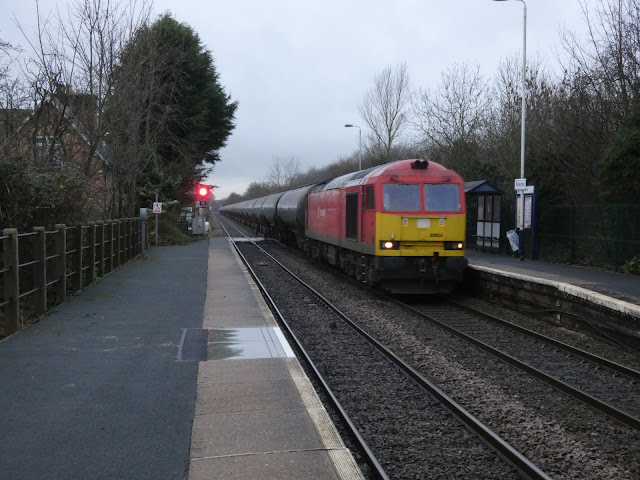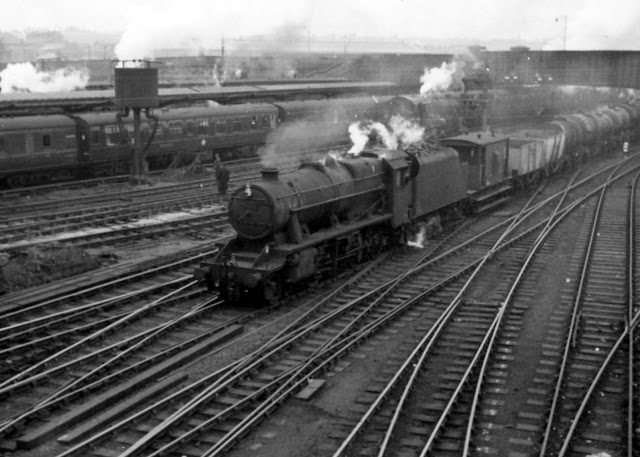Only original paintings
depicting railways in Britain and sold at the main railwayana auction houses during
2020 are added below, namely at GCRA, GNRA, GWRA, Railwayana Auctions UK Ltd
and Talisman RA. The auction year’s live events have been severely disrupted by
the pandemic, but all the auction houses have shown creditable ingenuity in
adapting to challenging circumstances, by organising alternative online sales
in a variety of formats. Results do not include general auction houses that hold
occasional railwayana auctions, nor those that have a limited railwayana
section within a mixed sale. Only lots containing paintings advertised in
auction catalogues and listed as sold on the day are included. It is highly likely,
of course, that railway paintings will also have changed hands in fine art and
other sales during the same period. All of the information from which this
summary has been taken has been available on the auction houses’ own websites.
Railway paintings continue to make a notable contribution to railwayana
auctions and examples of original artwork provide popular catalogue cover
illustrations for many such auction events. The paintings of a relatively small
group of leading railway artists continue to attract considerably more interest
than the majority of the pictures brought to auction, which then tend to sell comparatively
cheaply.
1. The number of lots
of original railway paintings sold at railwayana auctions rose from 2011 to
2016 and has dropped since then: 2011 - 32, 2012 - 41, 2013 - 61, 2014 - 88,
2015 - 105, 2016 - 136, 2017 - 81, 2018 - 66, 2019 - 87, 2020 - 70.
2. The number of railway
artists whose work was sold at the same auctions rose from 2011 to 2016 but has
also been lower since then: 2011 - 25, 2012 - 20, 2013 - 27, 2014 - 34, 2015 -
42, 2016 - 48, 2017 - 31, 2018 - 25, 2019 - 25, 2020 - 33.
3. Unsurprisingly, the
number of railwayana auction events that sold railway paintings also rose from
2011 until 2016 and has fallen since then: 2011 - 7, 2012 - 10, 2013 - 13, 2014
- 19, 2015 - 18, 2016 - 22, 2017 - 18, 2018 - 14, 2019 - 16, 2020 - 16.
4. In 2020, seven
paintings by four different artists reached or surpassed a £1,000 hammer price
at railwayana auctions. Over the last ten-years, work by Don Breckon [17] and Barry
G. Price [13] has been the most successful in this category. During the last
decade, the number of such paintings sold at these venues each year and the artists
concerned were:
2011 - 3 paintings - by
Heiron [2], Broom,
2012 - 3 paintings - by
Bottomley, Hawkins, Broom,
2013 - 8 paintings - by
Broom [2], Breckon [2], Heiron, Root, Price, Freeman,
2014 - 7 paintings - by
Root [3], Elford, Breckon, Freeman, Hawkins,
2015 - 11 paintings - by
Breckon [3], Hawkins [2], Root [2], Beech, Ellis, Elford, Price.
2016 - 13 paintings - by
Breckon [4], Price [3], Hawkins [2], Freeman, Root, Broom,
Greene,
2017 - 7 paintings -
by Freeman [2], Price [2], Broom, Root, Breckon,
2018 - 9 paintings -
by Hawkins [4], Breckon [2], Price [2], Root,
2019 - 9 paintings -
by Breckon [4], Broom, Cuneo, P. O. Jones, Root,
2020 - 7 paintings -
by Price [4], Freeman, P. O. Jones, Shelbourne,















































